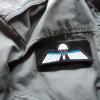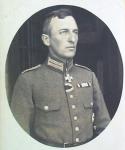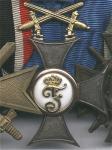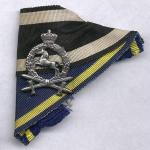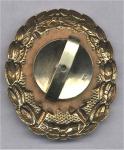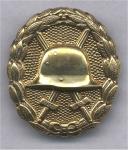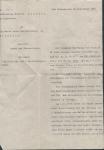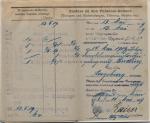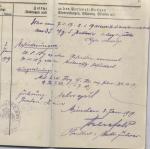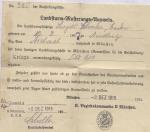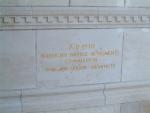There is still the possibility that this guy began the war as NCO (Feldhilfsarzt for example) and got the MVK 2. Later as officer he became the MilSanOrder. Btw. these are the award numbers for the MSO: Milit?r-Sanit?tsorden 1. Klasse (neck ribbon): 11 Milit?r-Sanit?tsorden 2. Klasse (breast ribbon): 163 If you read some stories how someone got these orders you wonder even more, that nobody recognizes them. However the price is, this time, nearly ok for such an ultrare imperial decoration. Here is an example from a Regimentsgeschichte. A doctor who got BOTH classes of that rare order: Stabsarzt Dr. Hermann Ott, K?niglich-bayerisches 12. Infanterieregiment: Stabs- und Battaillonsarzt des III. Btl. KB 12 IR "Prinz Arnulf". Born 9. august 1880. Milit?r-Sanit?tsorden 2. Klasse: Stabsarzt (Captain) Ott treated the wounded in the very first frontline after the capture of a french trench on oct. 30. and 31. 1915 northeast Neuville. Instead of staying in the save medical-dugout Dr. Ott asked the commander of the regiment for permission to treat the wounded in the first line to give them medical care as fast as possible. He treated and rescued wounded soldiers during heavy artillery- and trench-mortar fire; especially he cared for a heavily wounded soldier during a heavy handgrenade-battle in an trench-outpost. Dr. Ott showed exceptional gallantry and intrepidity and fulfilled his service above and beyond the call of duty. Milit?r-Sanit?tsorden 1. Klasse: During the Battle of Verdun Dr. Ott moved his medical-post voluntarily from the Chambrettes Ferme to the northern part of the Chaffour forest on may 25. 1916 to be closer to the fighting troops. There he treated, together with his Assitenzarzt Dr. Mau, hundreds of wounded soldiers for seven days and seven nights under the open sky and during heavy artillery fire without any cover. On june 2. 1916 Dr. Ott evacuated voluntarily the wounded out of an infantry-bunker nearby. He moved as one of the first of the 9. company through the heavy "Sperrfeuer" (artillery fire barrage?) and didn't left the bunker before the last wounded was evacuated. This is Dr. Ott with both medals. The 1. class around his neck and the 2. class as ribbon in the buttonhole.



